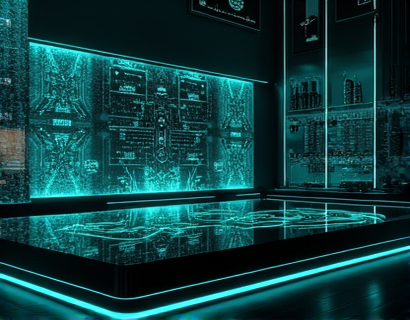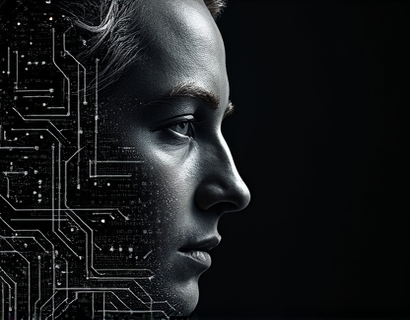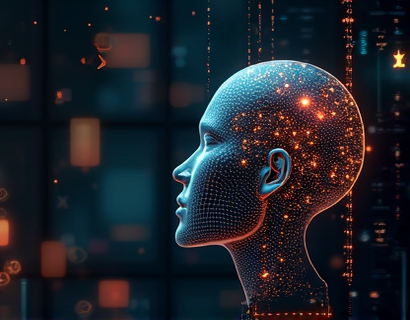AI-Powered Chat Interface: Transforming Access to Architecture Insights
The integration of artificial intelligence in the field of architecture has opened new avenues for accessing expert insights and specialized information. An AI-powered chat interface is revolutionizing the way users engage with architectural services, providing a secure and educational environment for individuals of all ages. This innovative approach ensures that users receive accurate and reliable content, fostering both learning and professional growth in the architecture domain.
Enhancing Educational Engagement
The traditional methods of learning architecture often involve extensive reading, practical workshops, and mentorship. However, these methods can be limited by geographical constraints, cost, and the availability of expert mentors. An AI-powered chat interface addresses these challenges by offering real-time, interactive learning experiences. Students and educators in architecture can benefit immensely from this technology, as it provides immediate access to specialized knowledge and expert advice.
For students, the AI chat interface serves as a virtual mentor, answering questions and providing explanations on various architectural concepts. This interactive learning tool can adapt to the user's level of understanding, offering simplified explanations for beginners and more detailed insights for advanced learners. Educators can also leverage this technology to create engaging lesson plans, incorporating real-time data and expert opinions to enhance the learning experience.
Specialized Information for Professionals
Professionals in the architecture field can utilize the AI chat interface to stay updated on the latest industry trends, technologies, and best practices. The chat interface can provide in-depth information on specific projects, design solutions, and regulatory requirements. This access to specialized knowledge helps architects and designers enhance their skills, innovate their designs, and deliver high-quality services to their clients.
Moreover, the AI chat interface can facilitate collaboration among professionals by connecting them with experts in various subfields of architecture. This connectivity fosters a community of practice, where professionals can share insights, discuss challenges, and explore collaborative opportunities. The platform's ability to verify content ensures that the information exchanged is credible and trustworthy, further enhancing the professional development of its users.
Ensuring Safety and Accessibility
One of the key advantages of an AI-powered chat interface in architecture is its focus on safety and accessibility. The platform is designed to provide content that is suitable for children and students, making it an ideal resource for educational settings. Content verification mechanisms are in place to ensure that the information provided is accurate, up-to-date, and free from harmful or inappropriate material.
For younger users, the chat interface can offer age-appropriate explanations and interactive learning modules. This not only makes the learning process more engaging but also helps in building a strong foundation in architectural principles from an early age. Educators can monitor and guide the learning process, ensuring that students are safely exploring the vast world of architecture.
User-Friendly Interaction
The AI chat interface is designed to be user-friendly, making it accessible to a wide range of users, regardless of their technical expertise. The natural language processing capabilities of the AI allow users to interact with the platform using everyday language, reducing the learning curve and enhancing the overall user experience. Whether a user is asking for a basic explanation of a architectural term or seeking detailed analysis of a complex design issue, the chat interface can provide comprehensive and clear responses.
The interface can also support multiple languages, breaking down language barriers and making architectural knowledge accessible to a global audience. This inclusivity ensures that users from diverse backgrounds can benefit from the platform, fostering a more inclusive and diverse architectural community.
Real-Time Insights and Updates
One of the most significant benefits of an AI-powered chat interface is its ability to provide real-time insights and updates. The AI can continuously learn from new data and user interactions, ensuring that the information provided is always current and relevant. This is particularly valuable in the fast-paced field of architecture, where new technologies, materials, and design approaches are constantly emerging.
For example, if a user is researching sustainable building practices, the chat interface can provide the latest research findings, case studies, and expert opinions on green architecture. This real-time access to cutting-edge information helps users stay ahead of the curve and make informed decisions in their projects and studies.
Enhancing Decision-Making Processes
The AI chat interface can significantly enhance the decision-making processes for both students and professionals in architecture. By providing detailed and accurate information, the chat interface helps users evaluate different design options, materials, and construction methods. This data-driven approach can lead to more informed and sustainable choices, ultimately resulting in better architectural outcomes.
For instance, a student working on a design project can use the chat interface to explore various design alternatives, considering factors such as structural integrity, environmental impact, and cost-effectiveness. The AI can offer comparative analyses and suggest optimal solutions based on the latest industry standards and best practices. This level of support can greatly improve the quality of educational projects and prepare students for real-world challenges.
Building a Knowledge Base
Over time, the AI chat interface can build a comprehensive knowledge base that aggregates insights, case studies, and expert opinions from various sources. This repository of information serves as a valuable resource for users, providing a wealth of knowledge at their fingertips. The platform can also allow users to save and organize relevant information, creating a personalized knowledge base that supports their learning and professional growth.
Furthermore, the AI can identify gaps in the existing knowledge base and suggest areas for further research or exploration. This proactive approach helps users stay informed about emerging trends and innovations in the field, encouraging continuous learning and adaptation.
Fostering a Community of Practice
The AI chat interface not only provides individualized support but also fosters a community of practice among users. By connecting students, educators, and professionals, the platform creates opportunities for collaboration, knowledge sharing, and mutual support. Users can join discussion forums, participate in Q&A sessions, and engage in peer reviews, enriching their learning and professional experiences.
This community aspect is particularly beneficial for students, who can connect with peers and mentors from around the world. The chat interface can facilitate virtual study groups, project collaborations, and networking events, expanding the horizons of its users and opening doors to new opportunities.
Conclusion
The AI-powered chat interface represents a significant leap forward in providing access to architecture insights. By combining expert knowledge with advanced technology, this platform offers a secure, educational, and user-friendly environment for learners and professionals alike. The focus on safety, accessibility, and real-time updates ensures that users receive accurate and reliable information, supporting their educational and professional goals.
As the field of architecture continues to evolve, tools like the AI chat interface will play a crucial role in shaping the next generation of architects and designers. By empowering users with specialized information and fostering a community of practice, this technology is not only revolutionizing the way we engage with architecture but also contributing to the creation of safer, more sustainable, and innovative built environments.









































